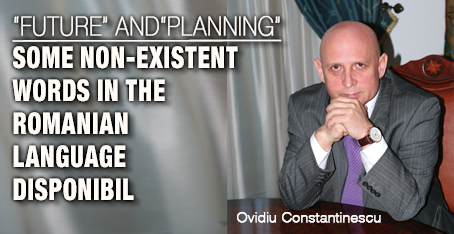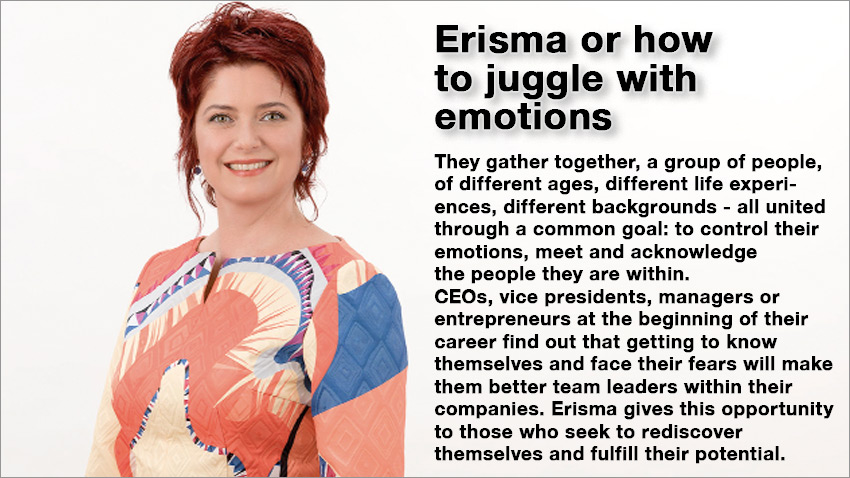In pursuit of winemaking excellence
Marius Iliev has embarked on a work of passion and perseverance, as he aims to reach new highs in an industry that is predicted to have outstanding development potential. At the helm of Via Viticola, Marius Iliev is confident that Romanias winemaking industry provides excellent growth opportunities if the cards are played right.
How much has been invested in the vineyard and in the winemaking facilities in the last few years?
Our total investment stands at 10 million euro.
What is the size of the plantation and what are the main varieties planted there?
We have 380 hectares of vineyards at Viticola Sarica Niculitel and the main grape varieties planted there include Aligoté, Sauvignon Blanc, Feteasca Alba, Chardonnay, Riesling, Feteasca Neagra, Babeasca Neagra, Merlot, Cabernet, and Syrah. We have another 110 hectares at Domeniile Prince Matei, in the Zoresti, Dealu Mare wine region, with 70 hectares already in production, and the main grape varieties are Merlot, Cabernet Sauvignon, and Feteasca Neagra.
What are the main wine brands produced at Viticola Sarica Niculitel and Domeniile
Prince Matei, respectively?
Our most successful Viticola Sarica Niculitel brands are Caii de la Letea, Sarica, Cuvee 4 Sfinti, Sarica Niculitel 1958, Epiphanie, Trilogie in Alb, and Scentico. In turn, Domeniile Prince Matei is famous for wine brands such as Prince Matei, Petit Matei, Villa Zorilor, Red Paradox, and Opus Dei.
What is the company’s annual wine-making capacity?
We have a total production capacity of three million liters.
What are the main distribution channels for your wines?
We rely on a diverse distribution model that includes the large retail networks, HORECA industry as well as export markets.
What is the total volume and value of the wine market in Romania?
The Romanian market has a total value of around 450 – 500 million euro, while the overall wine production capacity amounts to 4.5 million hectoliters.
What is your view on the wine market in Romania and what are the main difficulties that the company has had to deal with in this market?
Romania’s wine market has seen a dynamic development, with at least 10 percent of winemakers focusing on top quality products. Another five to 10 percent of the players in this segment have been very active in the area of marketing. However, the industry has been negatively affected by the poor administration and efficiency of professional and employers’ organizations, even though most winemakers blame the government for all the negative aspects in the industry. Another challenge stems from the difficult access to financing for most winemakers, except for the major ones, which will also hinder their access to non-refundable financing. There is also an excessive and unnecessary bureaucracy involved in all interactions with various authorities, including the Customs and the Ministry of Finance, and the lack of clarity in legislation is not helping.
How strong is competition on the Romanian wine market?
This question doesn’t have a straightforward answer. In a nutshell, if demand and supply meet at a price level allowing a reasonable return on investment, then we could say that the market is balanced in terms of competitiveness. From that perspective, we could argue that the market is very competitive, with a large number of winemakers failing to achieve adequate returns on their investments, and a small number of producers having a very high profitability, among the highest in the world in this industry.
To what extent could Romanian wines become more successful on foreign markets and how could such an objective be achieved?
Romanian wines can definitely be successful on foreign markets. But I can positively say what should be done if we want our efforts to fail: we should wait for the Government or someone in an office in Bucharest or in Brussels to create our country brand. This extremely important endeavor should have industry members at its forefront. They should join professional and employers’ organizations, with transparent agendas, adequate financing, and with competent executive management, guiding the process in which the authorities act for the benefit of the industry. Unfortunately, today we see the exact opposite, with the state leading the process.
What are the company’s main objectives for 2019
Our total investment stands at 10 million euro.
What is the size of the plantation and what are the main varieties planted there?
We have 380 hectares of vineyards at Viticola Sarica Niculitel and the main grape varieties planted there include Aligoté, Sauvignon Blanc, Feteasca Alba, Chardonnay, Riesling, Feteasca Neagra, Babeasca Neagra, Merlot, Cabernet, and Syrah. We have another 110 hectares at Domeniile Prince Matei, in the Zoresti, Dealu Mare wine region, with 70 hectares already in production, and the main grape varieties are Merlot, Cabernet Sauvignon, and Feteasca Neagra.
What are the main wine brands produced at Viticola Sarica Niculitel and Domeniile
Prince Matei, respectively?
Our most successful Viticola Sarica Niculitel brands are Caii de la Letea, Sarica, Cuvee 4 Sfinti, Sarica Niculitel 1958, Epiphanie, Trilogie in Alb, and Scentico. In turn, Domeniile Prince Matei is famous for wine brands such as Prince Matei, Petit Matei, Villa Zorilor, Red Paradox, and Opus Dei.
What is the company’s annual wine-making capacity?
We have a total production capacity of three million liters.
What are the main distribution channels for your wines?
We rely on a diverse distribution model that includes the large retail networks, HORECA industry as well as export markets.
What is the total volume and value of the wine market in Romania?
The Romanian market has a total value of around 450 – 500 million euro, while the overall wine production capacity amounts to 4.5 million hectoliters.
What is your view on the wine market in Romania and what are the main difficulties that the company has had to deal with in this market?
Romania’s wine market has seen a dynamic development, with at least 10 percent of winemakers focusing on top quality products. Another five to 10 percent of the players in this segment have been very active in the area of marketing. However, the industry has been negatively affected by the poor administration and efficiency of professional and employers’ organizations, even though most winemakers blame the government for all the negative aspects in the industry. Another challenge stems from the difficult access to financing for most winemakers, except for the major ones, which will also hinder their access to non-refundable financing. There is also an excessive and unnecessary bureaucracy involved in all interactions with various authorities, including the Customs and the Ministry of Finance, and the lack of clarity in legislation is not helping.
How strong is competition on the Romanian wine market?
This question doesn’t have a straightforward answer. In a nutshell, if demand and supply meet at a price level allowing a reasonable return on investment, then we could say that the market is balanced in terms of competitiveness. From that perspective, we could argue that the market is very competitive, with a large number of winemakers failing to achieve adequate returns on their investments, and a small number of producers having a very high profitability, among the highest in the world in this industry.
To what extent could Romanian wines become more successful on foreign markets and how could such an objective be achieved?
Romanian wines can definitely be successful on foreign markets. But I can positively say what should be done if we want our efforts to fail: we should wait for the Government or someone in an office in Bucharest or in Brussels to create our country brand. This extremely important endeavor should have industry members at its forefront. They should join professional and employers’ organizations, with transparent agendas, adequate financing, and with competent executive management, guiding the process in which the authorities act for the benefit of the industry. Unfortunately, today we see the exact opposite, with the state leading the process.
What are the company’s main objectives for 2019
This year we have lined up new investments, so we can achieve an increase in product quality across the board. We also aim to increase awareness of our brands, and retain our robust turnover growth, in excess of 100 percent, while ensuring profitability. Moreover, we plan to increase market penetration and expand our presence on foreign markets.
The interview is also available in our print edition of Business Arena.
S-ar putea să îți placă:
COMENTARII:
Fii tu primul care comenteaza







